NCERT Solutions Class 9 Science Chapter 9 - Gravitation
NCERT Solutions for Class 9 Science Chapter 9 – Gravitation are essential for understanding key Physics concepts in the CBSE curriculum. These well-structured answers help students grasp topics like universal law of gravitation, free fall, mass and weight, buoyancy, and more. Designed as per the latest syllabus, these solutions strengthen conceptual clarity and improve exam preparation. Ideal for revision and practice, they encourage logical thinking and scientific understanding, making them a valuable study tool for scoring well in Class 9 Science exams.
NCERT Solutions Class 9 Science – Gravitation – Exercise Images
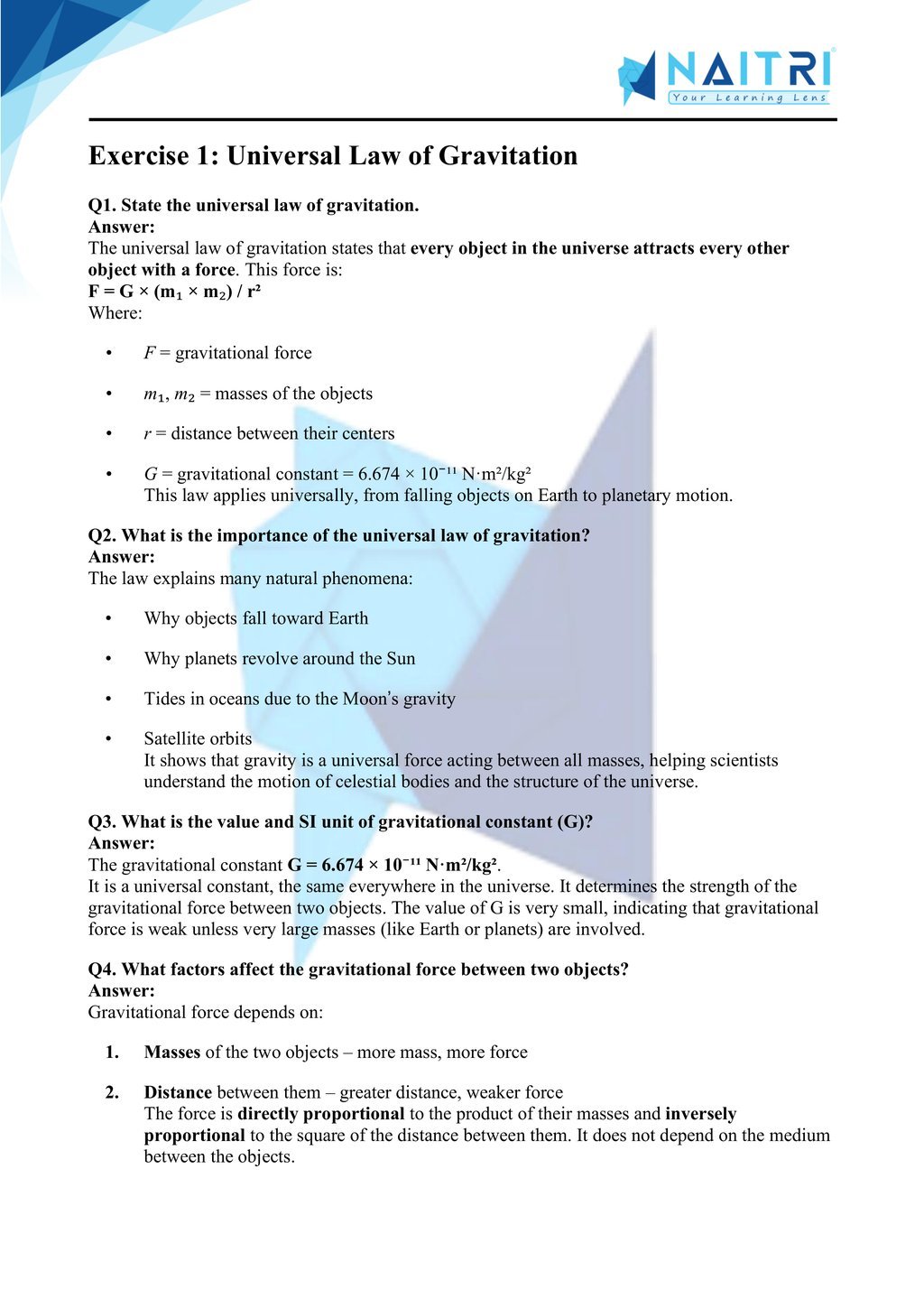
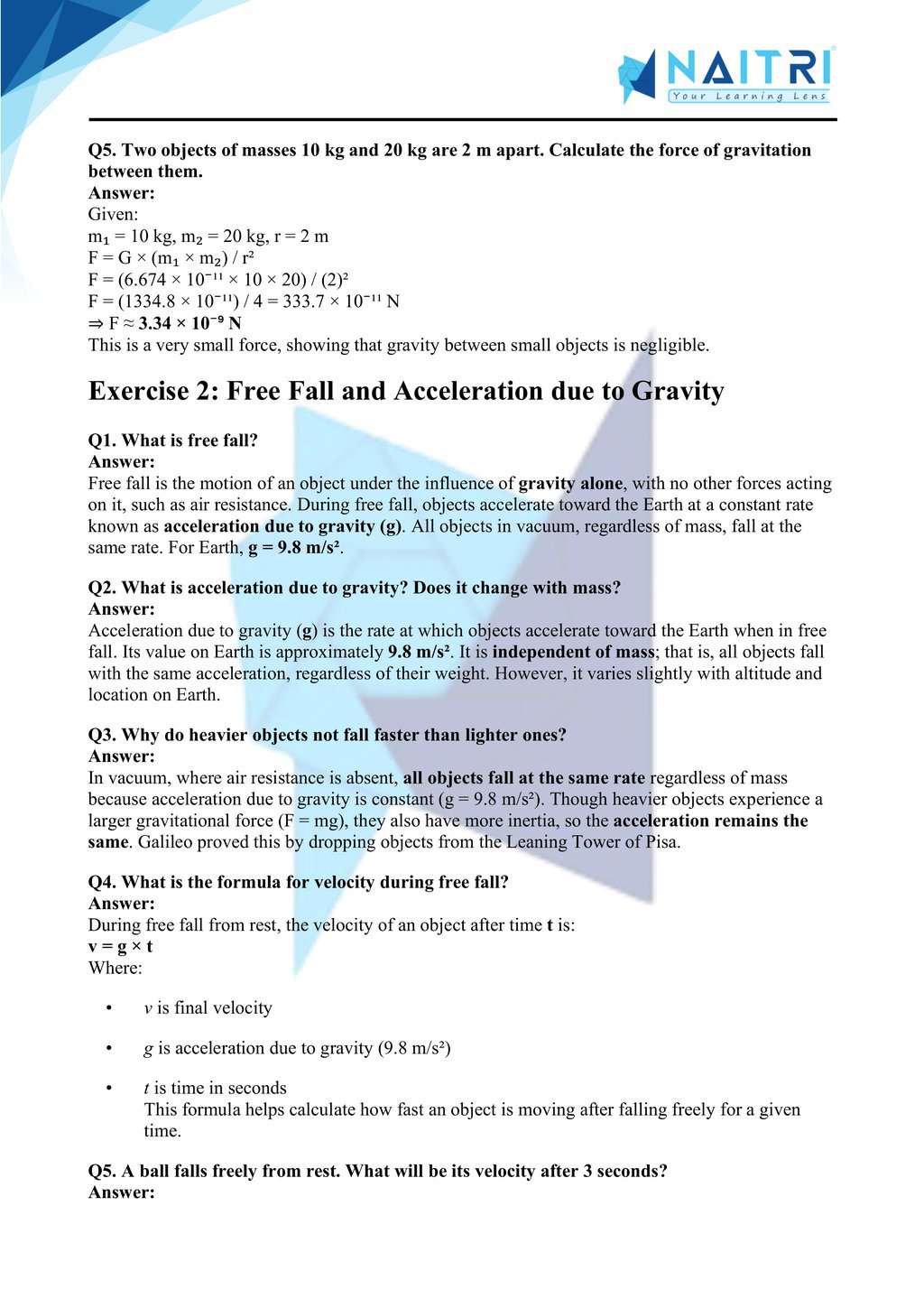
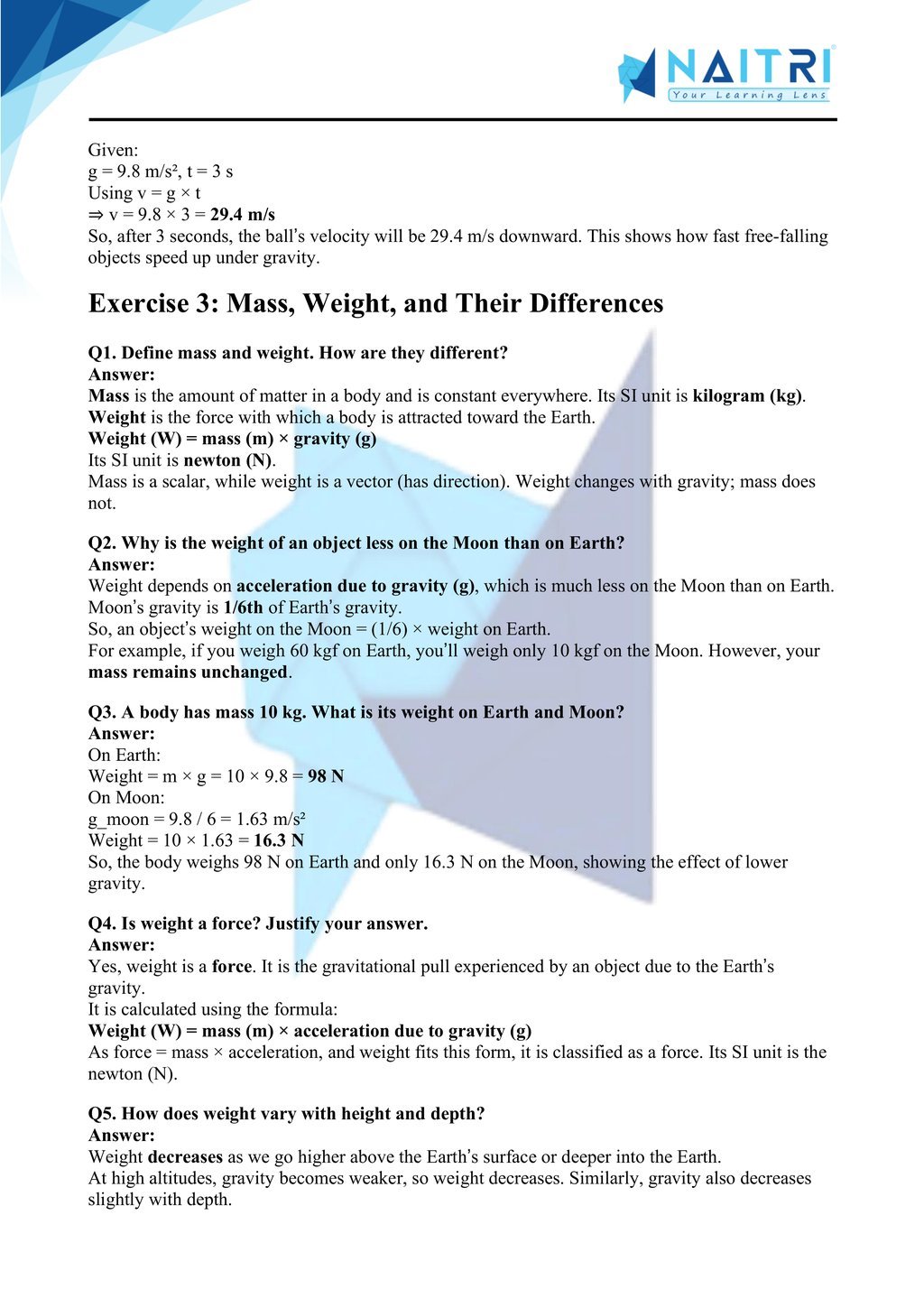
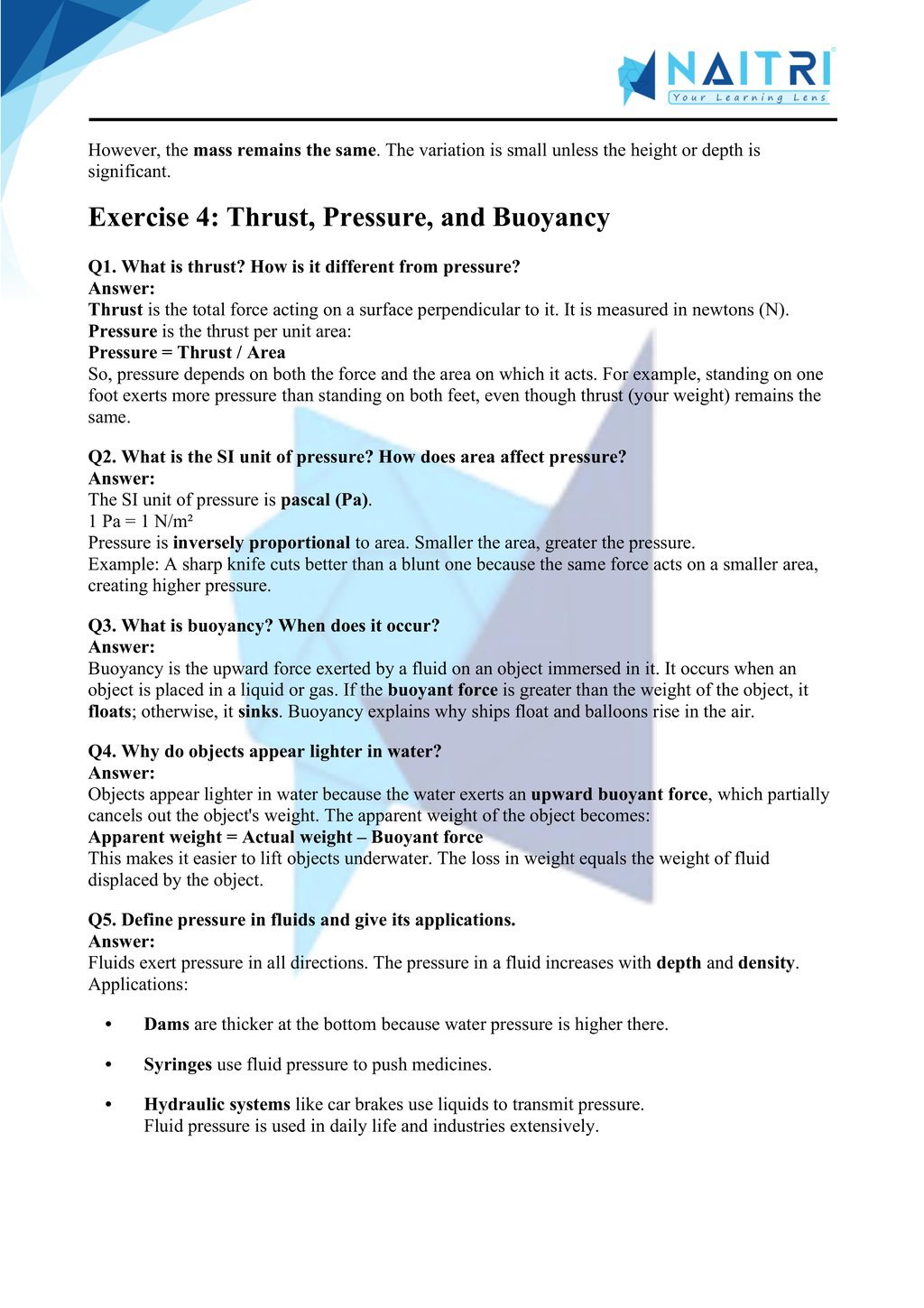
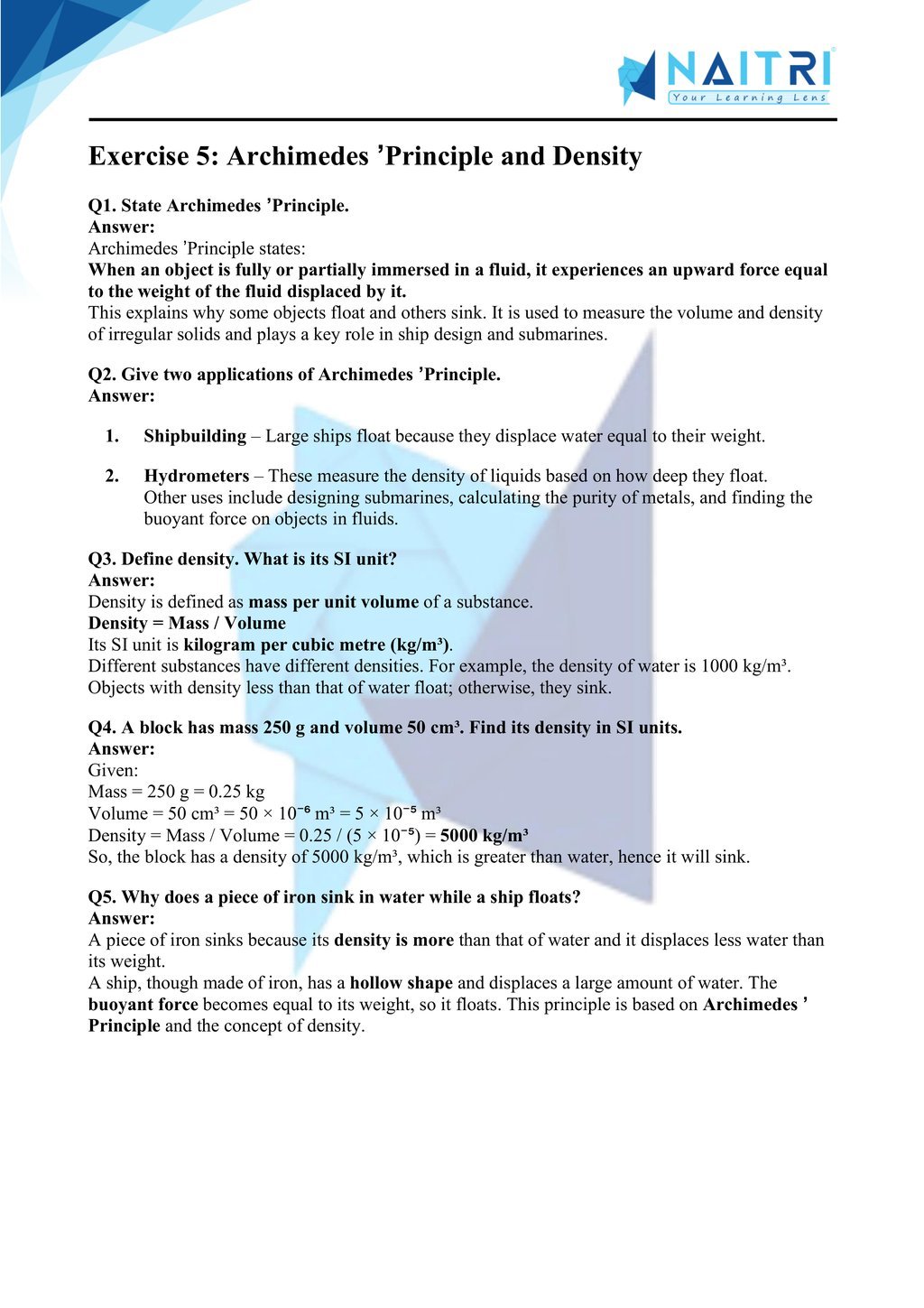
Experience Science Like Never Before – With AR!
Understanding Gravitation is now more exciting and immersive! With the NAITRI App, you can explore complex science concepts through Augmented Reality (AR). See objects fall, orbits form, and buoyancy play out — right in front of you. Our AR-powered lessons make learning interactive, 3D, and fun, helping you retain concepts better and enjoy every topic.



Visualize . Interact . Understand . The future of learning is here
Gravitation – Important Questions with Answers
1. What is gravitation?
Answer: Gravitation is the force of attraction between any two objects in the universe.
2. State Newton’s Universal Law of Gravitation.
Answer: Every object attracts every other object with a force that is directly proportional to the product of their masses and inversely proportional to the square of the distance between them.
F=Gm1m2r2F=Gr2m1m2
3. What is the value of the universal gravitational constant (G)?
Answer:
G = 6.674 × 10⁻¹¹ N·m²/kg²
4. What is the SI unit of G?
Answer: Newton metre² per kilogram² (N·m²/kg²)
5. What factors affect the gravitational force between two objects?
Answer:
Masses of the objects
Distance between the objects
6. Why is gravitational force called a universal force?
Answer: Because it acts between all objects in the universe, irrespective of their size or distance.
7. What is free fall?
Answer: When an object falls under the influence of gravitational force alone, it is said to be in free fall.
8. What is acceleration due to gravity (g)?
Answer: It is the acceleration produced in a body due to the gravitational force of the Earth.
9. What is the value of g on Earth?
Answer: 9.8 m/s²
10. Does the value of g remain constant everywhere on Earth?
Answer: No, it varies slightly with altitude and location (e.g., higher at poles than at the equator).
11. What is the relation between g and G?
Answer:
g=GMR2g=R2GM
Where M = mass of Earth, R = radius of Earth.
12. Define mass and weight.
Answer:
Mass is the amount of matter in a body (constant).
Weight is the force with which Earth attracts a body (variable).
W=mgW=mg
13. What is the SI unit of weight?
Answer: Newton (N)
14. What is the SI unit of mass?
Answer: Kilogram (kg)
15. Does weight change with location?
Answer: Yes, weight changes with the value of g, which varies at different places.
16. Why do objects appear weightless in a spacecraft?
Answer: Because they are in free fall, experiencing zero apparent weight due to microgravity.
17. What is the formula for gravitational force?
Answer:
F=Gm1m2r2F=Gr2m1m2
18. What is the difference between mass and weight?
Answer:
Mass is scalar, weight is vector.
Mass is constant, weight depends on gravity.
Mass is measured in kg, weight in N.
19. What is the weight of a 10 kg object on Earth?
Answer:
Weight = mg = 10 × 9.8 = 98 N
20. What happens to the weight of an object on the Moon?
Answer: It becomes 1/6 of its weight on Earth due to lesser gravity on the Moon.
21. State Archimedes’ principle.
Answer: When a body is immersed in a fluid, it experiences an upward buoyant force equal to the weight of the fluid displaced by it.
22. What is buoyancy?
Answer: The upward force exerted by a fluid on a submerged object is called buoyancy.
23. What is the reason for the buoyant force?
Answer: The pressure of a fluid increases with depth, creating a net upward force on the submerged object.
24. Why do objects float or sink in water?
Answer:
If the object’s density is less than water, it floats.
If more, it sinks.
25. State the formula for the pressure exerted by a liquid column.
Answer:
P=hρgP=hρg
Where h = height of the column, ρ = density of fluid, g = acceleration due to gravity.
Gravitation explains the universal force of gravity and its effects on objects. It includes topics like free fall, acceleration due to gravity, mass and weight, and the concept of pressure in fluids. Real-life phenomena such as why objects fall to the ground and how satellites stay in orbit are discussed. This chapter connects scientific principles with everyday experiences and builds a deeper understanding of the natural world.
Related Chapters You May Like
- Chapter – 1 Matter in Our Surroundings
- Chapter – 2 Is Matter Around Us Pure
- Chapter – 3 Atoms and Molecules
- Chapter – 4 Structure of the Atom
- Chapter – 5 The Fundamental Unit of Life
- Chapter – 6 Tissues
- Chapter – 7 Motion
- Chapter – 8 Force and Laws of Motion
- Chapter – 10 Work and Energy
- Chapter – 11 Sound
- Chapter – 12 Improvement in Food Resources
Download Naitri App
Easy, Visual Learning — Right on Your Phone
Learn with Augmented Reality! The Naitri app makes CBSE and MP Board concepts interactive and fun — even in low-resource settings. Watch lessons, complete homework, take tests, and track progress — all in one place. Anytime. Anywhere.
Available on








